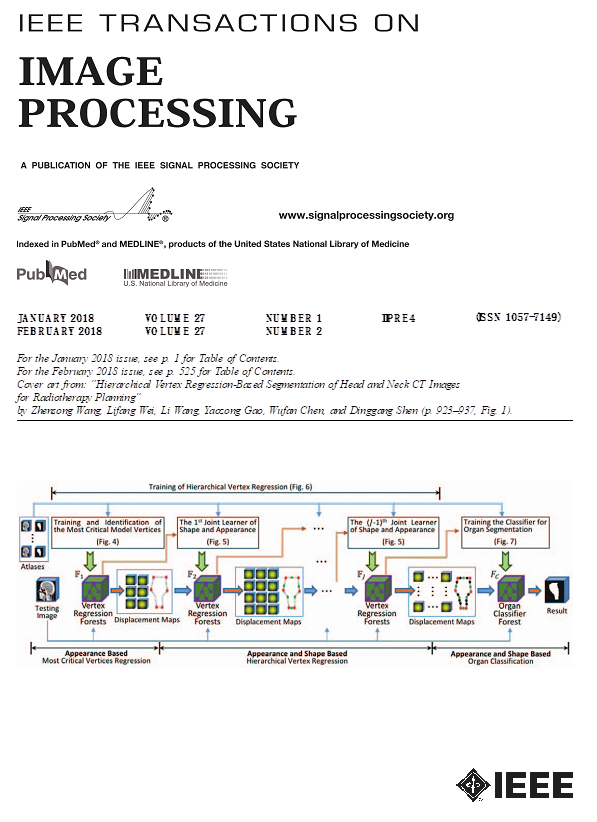Self-Supervised Masked Graph Autoencoder for Hyperspectral Anomaly Detection.
IF 13.7
1区 计算机科学
Q1 COMPUTER SCIENCE, ARTIFICIAL INTELLIGENCE
引用次数: 0
Abstract
Hyperspectral image anomaly detection faces the challenge of difficulty in annotating anomalous targets. Autoencoder (AE)-based methods are widely used due to their excellent image reconstruction capability. However, traditional grid-based image representation methods struggle to capture long-range dependencies and model non-Euclidean structures. To address these issues, this paper proposes a self-supervised Masked Graph AutoEncoder (MGAE) for hyperspectral anomaly detection. MGAE utilizes a Graph Attention Network (GAT) autoencoder to reconstruct the background of hyperspectral images and identifies anomalies by comparing the reconstructed features with the original features. Specifically, we constructs a topological graph structure of the hyperspectral image, which is then input into the GAT autoencoder for reconstruction, leveraging the multi-head attention mechanism to learn spatial and spectral features. To prevent the decoder from learning trivial solutions, we introduce a re-masking strategy that randomly masks both the input features and hidden representations during training, forcing the model to learn and reconstruct features under limited information, thereby improving detection performance. Additionally, the proposed loss function with graph Laplacian regularization (Twice Loss) minimizes variations in feature representations, leading to more consistent background reconstruction. Experimental results on several real-world hyperspectral datasets demonstrate that MGAE outperforms existing methods.用于高光谱异常检测的自监督掩码自编码器。
高光谱图像异常检测面临着异常目标标注困难的挑战。基于自编码器(AE)的方法由于其良好的图像重建能力而得到了广泛的应用。然而,传统的基于网格的图像表示方法难以捕获远程依赖关系和建模非欧几里得结构。为了解决这些问题,本文提出了一种用于高光谱异常检测的自监督掩膜图自动编码器(MGAE)。MGAE利用图形注意网络(GAT)自编码器重构高光谱图像的背景,并通过将重构特征与原始特征进行比较来识别异常。具体而言,我们构建了高光谱图像的拓扑图结构,然后将其输入GAT自编码器进行重建,利用多头注意机制学习空间和光谱特征。为了防止解码器学习琐碎的解,我们引入了一种重新屏蔽策略,该策略在训练过程中随机屏蔽输入特征和隐藏表示,迫使模型在有限信息下学习和重建特征,从而提高检测性能。此外,所提出的具有图拉普拉斯正则化(Twice loss)的损失函数最大限度地减少了特征表示的变化,从而导致更一致的背景重建。在多个真实高光谱数据集上的实验结果表明,MGAE优于现有方法。
本文章由计算机程序翻译,如有差异,请以英文原文为准。
求助全文
约1分钟内获得全文
求助全文
来源期刊

IEEE Transactions on Image Processing
工程技术-工程:电子与电气
CiteScore
20.90
自引率
6.60%
发文量
774
审稿时长
7.6 months
期刊介绍:
The IEEE Transactions on Image Processing delves into groundbreaking theories, algorithms, and structures concerning the generation, acquisition, manipulation, transmission, scrutiny, and presentation of images, video, and multidimensional signals across diverse applications. Topics span mathematical, statistical, and perceptual aspects, encompassing modeling, representation, formation, coding, filtering, enhancement, restoration, rendering, halftoning, search, and analysis of images, video, and multidimensional signals. Pertinent applications range from image and video communications to electronic imaging, biomedical imaging, image and video systems, and remote sensing.
 求助内容:
求助内容: 应助结果提醒方式:
应助结果提醒方式:


